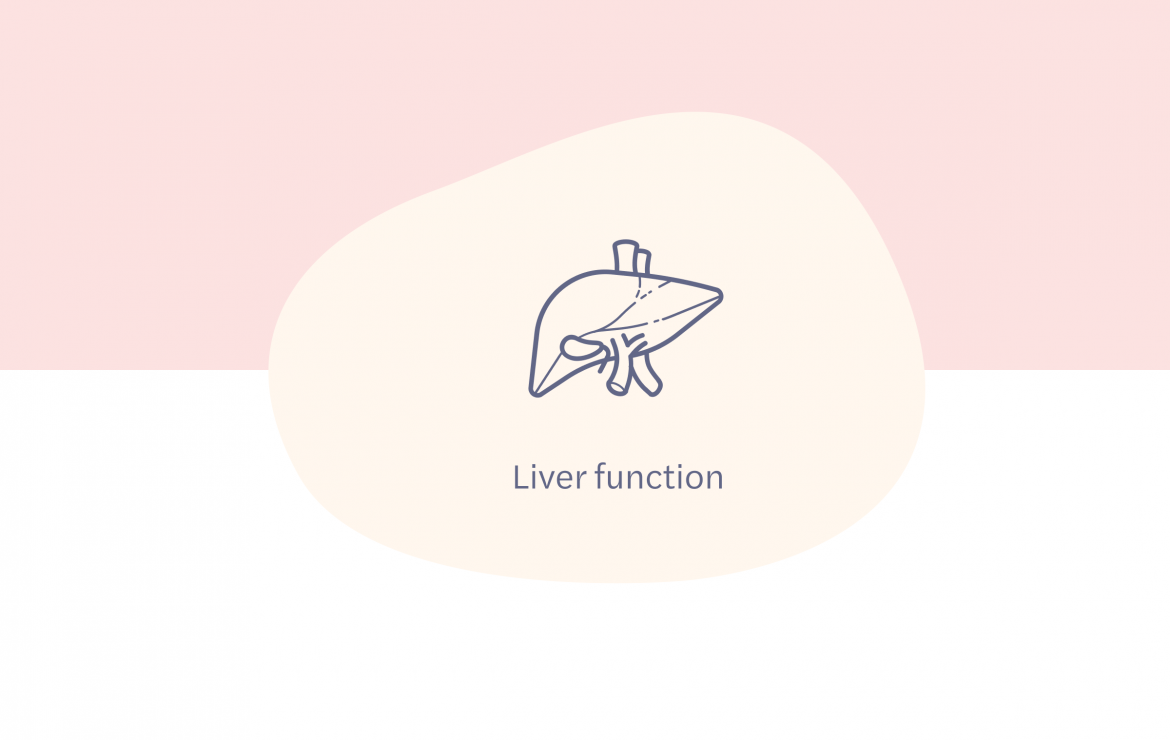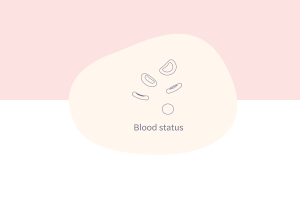Bilirubin

Liver function
What is Bilirubin?
Bilirubin is produced when red blood cells and certain other blood components break down. It is then processed in the liver and leaves the body through urine and bile.
It has a yellow-brownish color and is the substance that gives that characteristic color to bile and faeces. When bilirubin levels are very high under certain disease conditions, it can also tint the skin, eyes and mucosa yellow. This is called jaundice.
Bilirubin circulates in the blood in two forms:
-
Indirect (or non-conjugated): circulates in blood this way and is not soluble in water
-
Direct (or conjugated): it is formed in the liver from non-conjugated bilirubin and is soluble in water
Total and direct bilirubin are detected directly in blood, but the indirect fraction is calculated from these two above.
Why is this analysis important?
Bilirubin levels in the blood can be measured to assess liver function and red blood cell turnover. Higher than normal levels of bilirubin may indicate different types of liver problem or increased red blood cells destruction (hemolysis).
A small number of people, mostly male, can have a genetic condition called Gilbert’s syndrome, where bilirubin levels in the blood are constantly elevated. This condition affects about 5-10% of Western European populations and usually does not cause any symptoms nor require treatment. But in some cases, symptoms such as fatigue, stomach pain, loss of appetite and itching with no rash can be present.
Doctors may also order a blood bilirubin test to investigate the cause of jaundice, which is when the skin and eyes skin and the whites of the eyes turn yellow, or to monitor the side effects of certain medications.
In short, it is useful to analyse bilirubin levels in the blood to:
-
Assess liver function
-
Investigate the cause of jaundice
-
Identify problems with the liver and/or bile duct
-
Identify disease conditions that increase the breakdown of red blood cells
-
Monitor the side effects of certain medications
Results
The reference range for bilirubin levels in the blood can be different depending on the laboratory and technique used. Doctors usually also take into account a number of factors when evaluating bilirubin values.
High bilirubin levels in the blood may be associated with:
-
Impaired liver function (such as cirrhosis)
-
Acute infection/inflammation of the liver (such as acute hepatitis)
-
Bile duct disorders such as obstruction or inflammation
-
Diseases that increase the rate of destruction of red blood cells (such as hemolytic anemia or sickle cell anemia)
-
Genetic conditions affecting the liver (such as Gilbert’s syndrome)
-
Intake of certain medications, such as antibiotics (for example Rifampicin), contraceptives, Benzodiazepines (for example Diazepam), Indomethacin or anticonvulsants (such as Phenytoin)
Low bilirubin levels in the blood may be associated with:
-
Intake of certain medications such as Vitamin C, Barbituates and Theophylline
-
High caffeine intake
Other Considerations
Intake of coffee and alcohol should be avoided 24 hours prior to the test.
Bilirubin levels in the blood are higher during the day time compared to the night time. It is therefore preferable to leave the blood sample for analysis in the morning, after a normal night’s sleep.
Prolonged fasting increases bilirubin levels in the blood.
A normal bilirubin test is often not sufficient to confirm or rule out any disease. It is common to analyse bilirubin levels in the blood together with analysis of liver enzymes ALT, AST, GT and ALP as well as a full blood count for a more comprehensive picture.
Tests that include this marker
References
Approach to the patient with abnormal liver biochemical and function tests. Lawrence S Friedman, MD. UpToDate Mar 05, 2019









